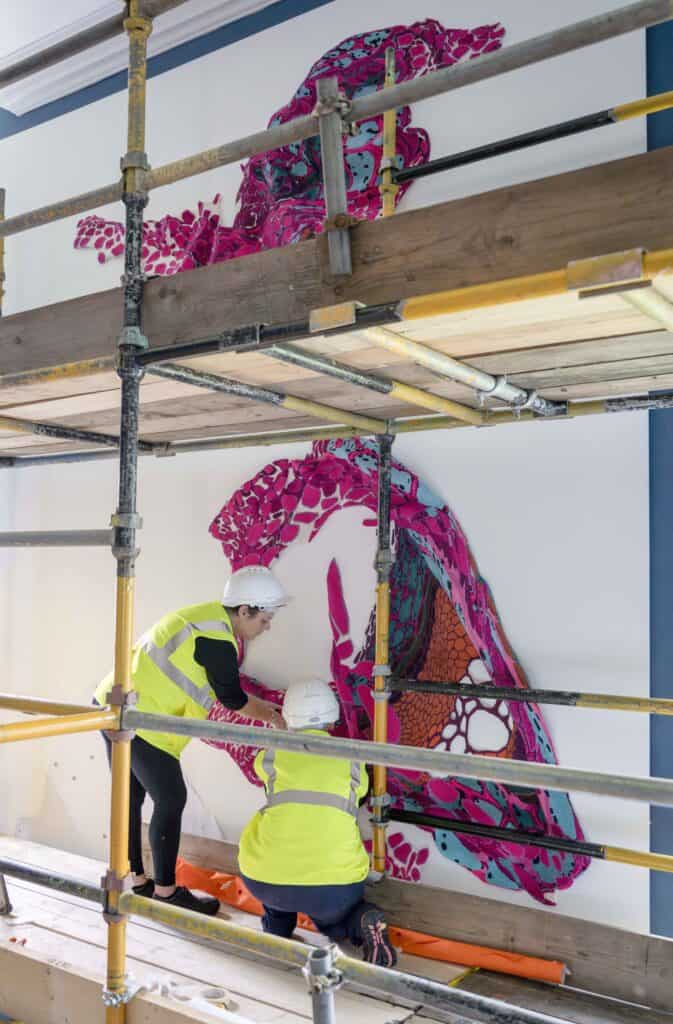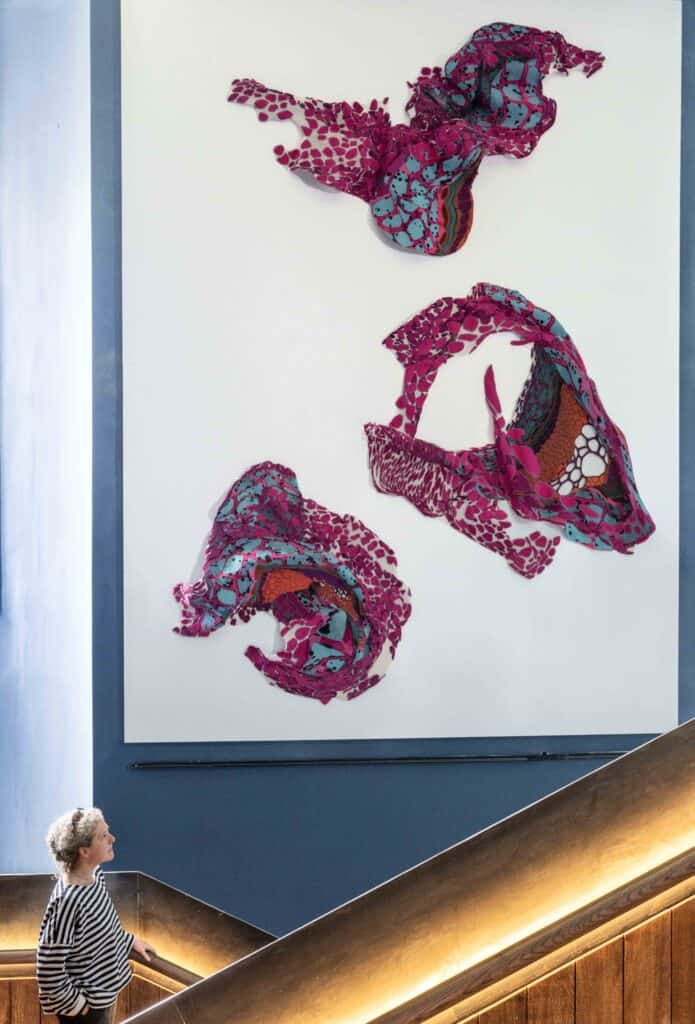Main image: © Dovecot Studios. Photography David Parry
An intricate and innovative tapestry honouring the first women allowed to matriculate at a university in Britain – known as the Edinburgh Seven – has been unveiled at its long-term home in the city.
The colourful three-part artwork by Dovecot Studios is on public display at the University of Edinburgh’s Futures Institute – once the site of the city’s surgical hospital – in tribute to the women who enrolled to study medicine in 1869.
Dovecot commissioned celebrated Scottish artist Christine Borland to design the tapestry, which took seven weavers at Dovecot Studios more than 4000 hours to create, using more than 90,500 metres of yarn in bold hues of pinks and oranges.

Borland’s design used cutting-edge motion capture technology to record the movement of cloths in simple acts associated with care, medical training and research. The artist chose the magenta and cyan colour scheme to represent the dyes used in both the scientific staining of cells and textile in the 19th century. The tapestry was brought to life with both traditional and modern techniques using linens, cotton and nylon yarns. Unlike traditional tapestry, the artwork has an organic shape based on a cellular structure in motion and can be moulded and shaped into sculptural forms.
The triptych has returned to Edinburgh after a display at the V&A South Kensington in London and is now suspended over a central stairwell at Edinburgh Futures Institute, inviting viewers to enjoy the artwork from numerous angles. The installation was a complex process requiring the University’s Estates team working closely with the weavers at height for over two weeks.

The Futures Institute – which has been set up to encourage ‘trailblazing’ across disciplines – is a fitting home for the work, with the institute’s emphasis on innovation capturing the spirit of the Edinburgh Seven.
The celebrated group, which included pioneering figures such as Sophia Jex-Blake and Edith Pechey, met with resistance during their time as students, most notably at the 1870 Surgeon’s Hall riot, when protestors attempted to block the women from sitting an exam. The campaign they fought to graduate and qualify as doctors at the University of Edinburgh was ultimately unsuccessful.
The women’s efforts attracted support from figures including Charles Darwin, and eventually led to the Medical Act of 1876, which legally permitted women to practice medicine.
The University awarded posthumous degrees to the group in 2019, with female undergraduates collecting their certificates.
Students and staff from the University’s Medical School were invited to cut away the warp of the tapestry, symbolising the legacy that the Edinburgh Seven have left in enabling medics today.
The tapestry, which was funded by Sir Ewan and Lady Brown and the Dovecot Foundation, is now on public display at Edinburgh Futures Institute on Lauriston Place.
Patricia Erskine, Culture & Community Director for Edinburgh Futures Institute said:
“The tapestry is a beautiful tribute to the Edinburgh Seven, who continue to inspire more than 150 years later. The placement of the tapestry in the old teaching hospital is a fitting homecoming for these women of science and reminds us all of the importance of inclusivity in learning.”
Christine Borland, artist, said:
“It’s been a privilege to work with the Dovecot team to experiment at the boundaries of contemporary tapestry. The capacity of tapestry to interpret history with integrity and imagination makes it a fitting medium for the extraordinary story of the Edinburgh Seven.”
Dovecot Studios Director Celia Joicey said:
“This extraordinary tapestry was created by all seven Dovecot Weavers during the pandemic. The innovative use of technique, structure, colour and texture reflects the skill of the weavers and represents the power of tapestry to communicate complex ideas.






